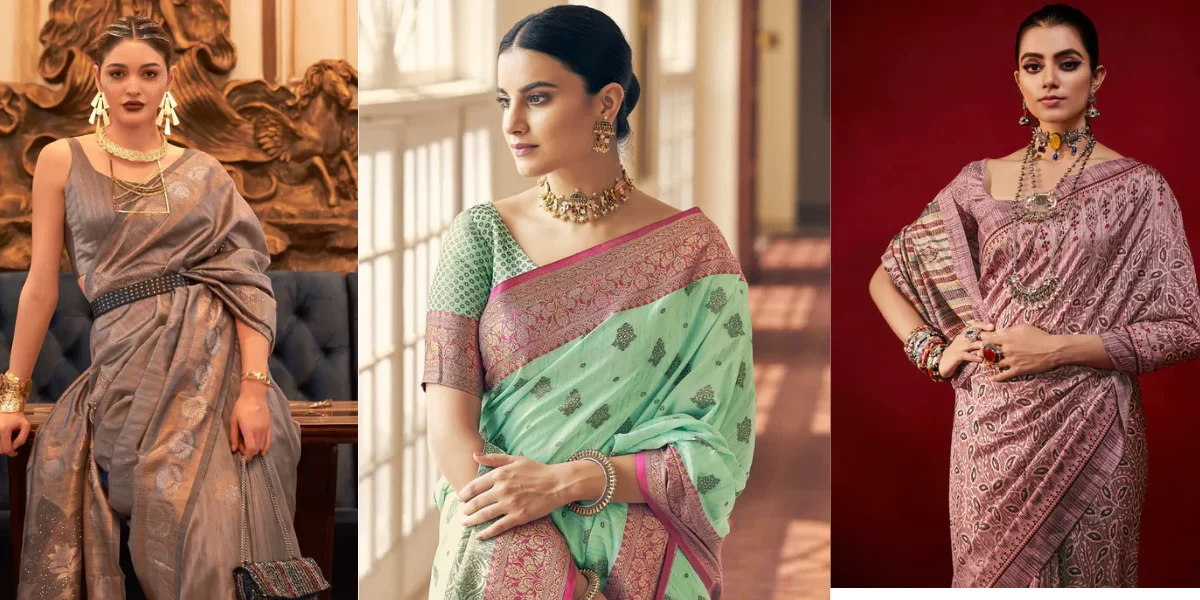When it comes to Indian textiles, the Patola saree stands as a symbol of exquisite craftsmanship and timeless elegance. Known for its intricate designs and vibrant colors, the Patola saree is a heritage textile that embodies the rich cultural tapestry of India. This blog post delves into the fascinating history, intricate weaving techniques, and enduring legacy of Patola sarees, shedding light on why they are considered the epitome of craftsmanship.
The Origin and Historical Significance
Patola sarees originate from Patan, a historic city in Gujarat, India. This art form has been practiced by the Salvi community, renowned for their exceptional weaving skills. The history of Patola sarees dates back to the 11th century, with references in ancient texts highlighting their significance. The sarees were historically worn by royalty and high-status individuals, and their production was a closely guarded secret passed down through generations.
Craftsmanship and Weaving Techniques
What sets Patola sarees apart is the unique weaving technique known as double ikat. Unlike traditional weaving methods, double ikat involves dyeing both the warp and weft threads before they are woven together. This technique requires exceptional precision and skill, as any slight deviation can disrupt the intricate patterns.
- Dyeing Process: The first step involves tying and dyeing the threads in various colors. The dyeing process is labor-intensive, with artisans meticulously wrapping threads to create the desired patterns. Each thread is dyed separately, which allows for the creation of complex and vibrant designs.
- Weaving Process: Once dyed, the threads are carefully arranged on the loom. The double ikat technique involves aligning the threads in such a way that the dyed patterns come together perfectly during weaving. The weaver must be highly skilled to ensure that the intricate designs are maintained throughout the fabric.
- Patterns and Motifs: Patola sarees are renowned for their elaborate motifs, which include geometric patterns, floral designs, and traditional symbols. These motifs are often inspired by nature, mythology, and religious iconography. The combination of vibrant colors and intricate patterns creates a visually stunning effect that is a hallmark of Patola sarees.
The Significance of Patola Sarees
Patola sarees hold a special place in Indian culture and fashion. They are not just a piece of clothing but a testament to India’s rich textile heritage. Here are a few reasons why Patola sarees are highly valued:
- Cultural Heritage: Patola sarees are a significant part of India’s cultural heritage. They reflect the artistry and tradition of the Salvi weavers of Patan. Owning a Patola saree is akin to owning a piece of history.
- Rarity and Exclusivity: Due to the intricate and time-consuming process involved in making Patola sarees, each piece is unique and exclusive. The rarity of these sarees makes them highly sought after by collectors and fashion enthusiasts.
- Symbol of Status: Historically, Patola sarees were worn by royalty and aristocrats. Today, they continue to be a symbol of sophistication and high status. Wearing a Patola saree often signifies a deep appreciation for traditional craftsmanship and cultural heritage.
The Modern Revival
In recent years, there has been a resurgence of interest in Patola sarees. Modern designers and fashion houses are incorporating Patola designs into contemporary fashion, blending traditional artistry with modern aesthetics. This revival has brought Patola sarees to a global audience, ensuring that their legacy continues to thrive.
Conclusion
The Patola saree is more than just a garment; it is a living legacy of India’s rich weaving tradition. Its intricate patterns, vibrant colors, and meticulous craftsmanship make it a true masterpiece of textile art. By understanding and appreciating the legacy of Patola sarees, we not only celebrate their historical significance but also contribute to the preservation of a cherished cultural heritage. Whether worn for special occasions or admired as a collector’s piece, Patola sarees remain a testament to the artistry and skill of Indian weavers, embodying the epitome of craftsmanship.
Related posts
Recent Posts
Advertisement



